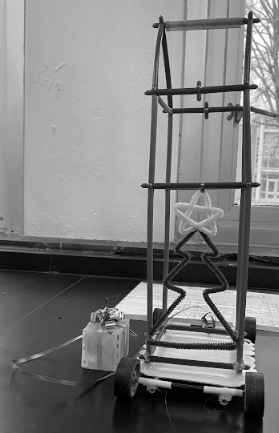Day to day difficulties; Schueler’s experience with Chiari Malformation Type 1
May 17, 2022
Chiari Malformation Type 1 occurs when the section of the skull containing a part of the brain, the cerebellum, is too small or is deformed, putting pressure on and crowding the brain. The lower part of the cerebellum is displaced into the upper spinal canal according to mayoclinic.org.
Junior Kaitlyn Schueler was first officially diagnosed with Chiari Malformation Type 1 in Dec. 2021, however, she first started showing symptoms back in Jan. 2019.
“When I was first having issues, I began getting scared of even coming to school. I got terrified for my own safety, I couldn’t stand on my own, [and] my legs and arms went numb and unbalanced,” Schueler explains.
According to mayoclinic.org, some symptoms of Chiari Malformation Type 1 are neck pain, problems with balance, numbness, dizziness, difficulty swallowing, etc.
“Some symptoms I experience are headaches, numbness, loss of vision, shakiness, imbalance and ringing in ears,” Schueler says. All of these issues are caused because “[her] cerebellum is off-balance.”
The cerebellum is the part of your brain that controls balance, and when she experiences a bad headache or a loss of vision, it comes in spurts lasting from seconds to hours. These can be dangerous to her especially if she is driving or playing a sport.
“My problems resembled panic attacks. Which is why it would take almost 2-3 years before [she] had any testing done,” she says.
When she was first starting to have issues it was around the same time she was going to get her permit at the DMV and she was fearful that they would not allow her to get a permit or license.
“[She] was told by neurologists that the only way [she] could truly resolve this issue is to have surgery on the back of my skull,” she explains. They would remove a piece of her skull to relieve the pressure inside of her brain; however, for her state of the condition, surgery is not necessary. “Chiari Malformation Type 1 is common, surgery is not recommended unless it develops into Type 2,” Schueler says.
Currently the only treatment that Schueler is receiving is “symptom regulation,” which includes headache medication and also counseling to manage her stress.
“The idea of managing the stress helps with keeping away the idea of activating [her] ‘flight or fight’ response in a small scenario,” Schueler says.
Schueler’s condition can vary from day to day, some days it’s a “breeze,” and she will have something little as a headache all day; however, other days, she will be “scared to move out of [her] bed.”
“This condition can make [her] unable to move by weakening [her] limbs. “There are also days that when [she] goes to school and if [she] has an issue, it can be impossible to get help without a friend nearby.”
If she is dizzy or can not focus in school, papers in classes can become frustrating to her but she is “glad,” that she has her teachers helping her whenever she needs it.






